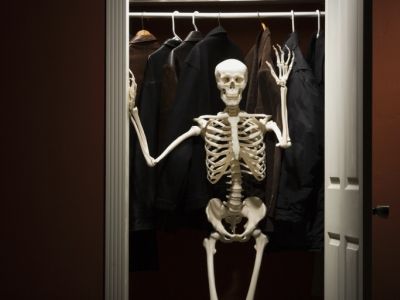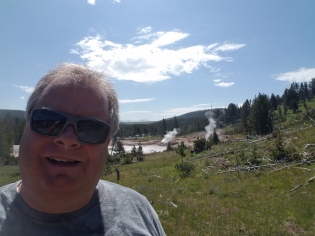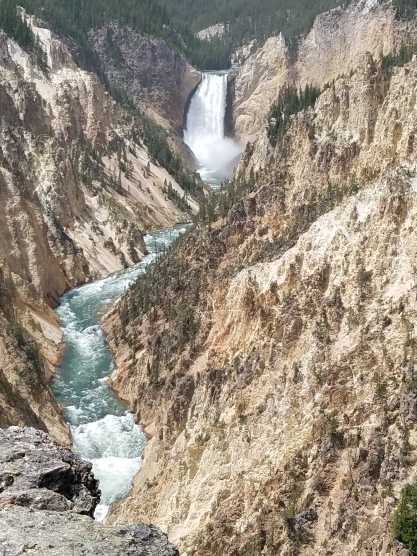
I used to wonder how a centerfold or porn actor explains their past to their children. In today’s age of the Internet, it seems all of those past skeletons in the closet never stay there. Just look at what happened a few years ago when all those celebrities’ phones got hacked and someone posted embarrassing photos of them on the internet.
The writer’s version of this must be when old novels or articles come back to haunt them. One of my favorite authors, Dean Koontz, wrote lots of novels until pen names when he was struggling to make a living. Apparently, some were even softcore porn. He has said in various interviews that he has bought back the rights of those novels and they will never again see the light of day.
However, the novels were published and copies are still out there if you know what name Koontz used when he wrote them. I’m not sure if all of his pen names are known, but if they are, then it’s just a matter of someone finding one of those pen names of a book cover.
When I started out freelancing years ago, I had to scramble to make ends meet. One way I did this was to write for web sites called content mills. They are websites that provide content for a lot of other web sites like eHow.com and Livestrong.com.
The articles didn’t pay much, but they also didn’t require a lot of work. I could turn one article around in an hour, and to be sure, that is what I did. Since content mills didn’t pay well, I wasn’t going to put hours of work into the story. I got $20 for a 500-word article, on average.
So I didn’t put a lot of work into these articles. Turnaround was important, and I tried to do 3 or 4 a day before I went onto the work I really wanted to be writing. These articles weren’t ones that I put a lot of effort into, but I tried and research them to get them right.
On top of this, the articles were vetted by editors who also weren’t putting a lot of time into their work because they got paid by the number of articles they edited. That means, sometimes, even when I had something right, the editor changed it to something that was inaccurate.
I wrote most of these articles around 10 years ago. However, every once in a while I get an e-mail from someone with a question about the accuracy of one of the articles. Most of the inquiries are from polite people, but some are aggressive, accusing me of all sorts of things.
I try my best to answer the questions politely (even the mean ones). However, honestly, I don’t remember these articles. By contrast, I remember the articles I cared about. So I cannot answer these questions fully, which is not a position that I enjoy being in.
I am embarrassed that these older pieces are still out there after all this time. They certainly don’t represent my best work, but they are still out there representing me. I don’t even have any rights to the work because they were all done as work for hire. That means I can’t ask for the articles to be taken down when I come across one of them.
If there is a silver lining, though, these articles show me how far I’ve come since I started on this freelance writing journey.
You might also enjoy these posts:

 Although it’s not a popular form of writing any longer, I’ve had the opportunity in recent months to write a serial. It has been a fun experience that I hope will continue because I’ve come up with a few more ideas for serials while working on the six-part story called
Although it’s not a popular form of writing any longer, I’ve had the opportunity in recent months to write a serial. It has been a fun experience that I hope will continue because I’ve come up with a few more ideas for serials while working on the six-part story called 
 I enjoy watching videos on Youtube when I need a short break from my writing. The site offers something for everyone, but that may be changing. Some content creators have been talking about how Youtube is demonetizing their videos or changing the search algorithms so that their videos are only being seen by a fraction of the viewers their videos typically get. This is having a big effect on their bottom line.
I enjoy watching videos on Youtube when I need a short break from my writing. The site offers something for everyone, but that may be changing. Some content creators have been talking about how Youtube is demonetizing their videos or changing the search algorithms so that their videos are only being seen by a fraction of the viewers their videos typically get. This is having a big effect on their bottom line.
 I just got back from a two-week-long family vacation that hit 15 states and covered 5,800 miles. It was wearying, but I saw a lot of things that I will always remember. I’ve written in the past about how going on vacation helps recharge my creativity. That remains true.
I just got back from a two-week-long family vacation that hit 15 states and covered 5,800 miles. It was wearying, but I saw a lot of things that I will always remember. I’ve written in the past about how going on vacation helps recharge my creativity. That remains true.
 Once I realized that was what it was, I had a few stray ideas about possible scenes in the story, but it wasn’t until we reached the New River Gorge National Park in West Virginia, nearly a week later and halfway across the country that the story gelled for me.
Once I realized that was what it was, I had a few stray ideas about possible scenes in the story, but it wasn’t until we reached the New River Gorge National Park in West Virginia, nearly a week later and halfway across the country that the story gelled for me.
 Someone asked me yesterday if I was a coffee house writer. I thought about it and told her, “Maybe.”
Someone asked me yesterday if I was a coffee house writer. I thought about it and told her, “Maybe.”